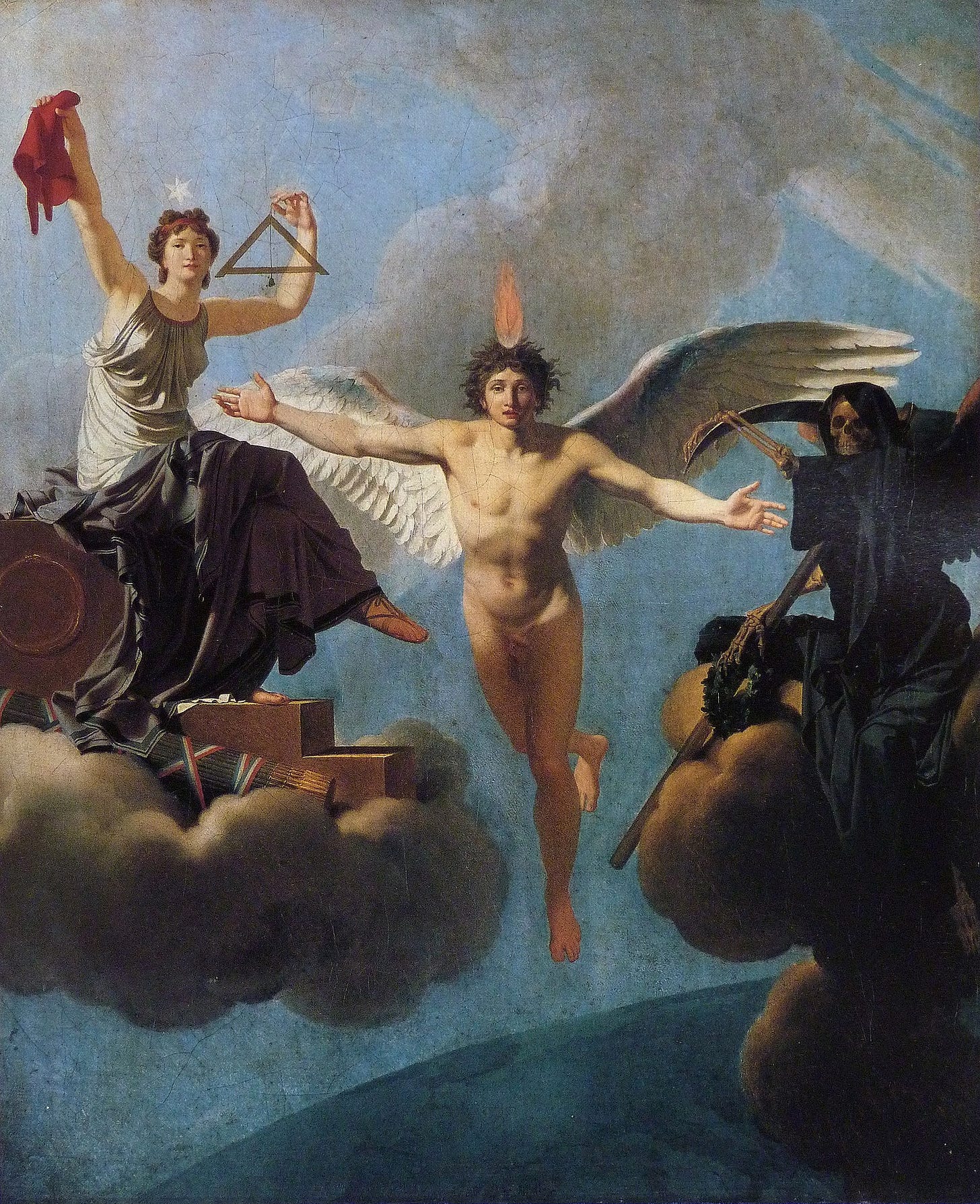Among neoclassical painters, Jean-Baptiste Regnault (1754–1829) is not among the most celebrated. Despite his relatively modest output, as a member of the Academy of Fine Arts, he earned respect for his refined depictions of antique subjects. Passionate about the French Revolution, Regnault presented this small canvas (49 x 60 cm), titled Freedom or Death, at the Salon of 1795.
Building on his earlier success, including winning the prestigious Prix de Rome, Regnault, who considered himself an equal to the great Jacques-Louis David, ventured into revolutionary themes. The composition of this work, rich in allegory, centers on three figures embodying revolutionary symbols and confronts the viewer with a profound moral and political choice.

Composition and Symbolism
The painting features three main allegorical figures.
The Genius of France, positioned in the center with outstretched arms, represents the spirit of the French nation, newly freed from monarchy.
Liberty (or the Republic), on the right, wears a Phrygian cap symbolizing freedom. She holds revolutionary emblems like the triangle and plumb line, representing equality.
Death, on the left, is portrayed as a skeleton with a scythe. A laurel crown suggests both sacrifice and reward.
The interplay of light and shadow heightens the symbolic tension. Liberty is illuminated, signifying hope and stability, while Death remains cloaked in shadow, embodying danger and uncertainty. Unlike Death, who hovers on a cloud, Liberty is seated, symbolizing a reign of stability and solid foundations. Rejecting Liberty, the painting implies, leads only to precarious and uncertain outcomes.
Regnault’s composition is meticulously structured to suggest the weight of a choice. The Genius of France, with arms extended, evokes a scale balancing the allegorical figures. However, the arms are slightly tilted, hinting at imbalance or an ongoing struggle to find equilibrium - a reflection of the turbulent historical moment.
This is indeed the case in relation to the historical context.
A Message to Troubled Times
The painting emerged during one of the most tumultuous periods in French history. The Revolution, which began in 1789, saw the monarchy overthrown in 1792 and plunged the nation into the Reign of Terror a year later. This era of mass executions ended only in 1794, leaving France in political and social upheaval. Created in 1795, as the country faced a transition of power, internal strife, and external wars, the painting reflects the uncertainties of the time.
(For more insight into this era, consider reading Anatole France’s novel The Gods Are Athirst, which vividly captures the period.)
Regnault’s work serves as both a warning and a call to action. It reminds viewers that the Republic, with its ideals of liberty, demands vigilance and sacrifice. This message could be interpreted as justifying the harsh measures taken during the Terror, including the execution of "traitors," as well as the sacrifices of soldiers defending the fledgling Republic from internal and external threats.
The title, Freedom or Death, encapsulates this stark dichotomy. It suggests that true liberty comes at a price, even the ultimate one. The painting exemplifies the use of art as propaganda during the Revolutionary era, inspiring patriotism and a steadfast commitment to republican ideals.




